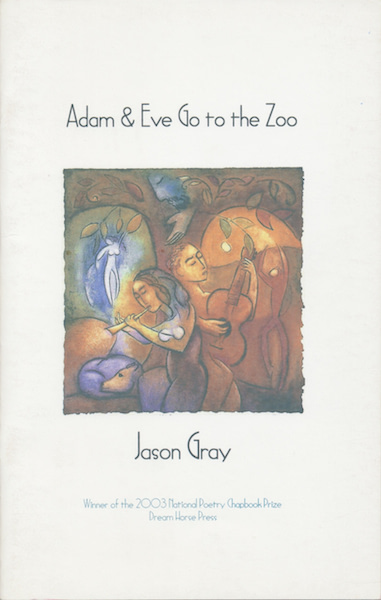Books
RADIATION KING
In his Radiation King, Jason Gray writes, “Atoms really are / Perfection: / tiny / movers, brilliant gods,” but he might as well be describing the poems in this awe-inspiring collection. Each line, each word, is “tipped with fire.” Radiation King speaks to darkness and light, to the past and the future, to myth and fact, to faith and science, to ruin and hope. When I say the poems are true, I do not mean they are factual, though there is certainly science and history at work here. I mean they are to be believed.
Maggie Smith

PHOTOGRAPHING EDEN
“Jason Gray’s gift is quiet but profound. He brings the same respectful eye to nature as to acts of art — an eye that adds its own light to the occasions. A book for delectation.”
Heather McHugh
“Few poets are more with it than Jason Gray. It is better than that: he is equally at home with the urban and the ‘natural,’ the present and the past. He is enabled by a secure but unobtrusive technique. . . . His phrasing can be startling without being freakish. It is the rightness that startles.”
Turner Cassity
“As its title suggests, Photographing Eden is a book of postlapsarian poems intent not on naming the creatures of the new world, but on naming—and thus trying to reclaim—the losses of this one. By turns dark and whimsical, these poems offer field guides and museum tours, photographs and paintings, of our mythological prehistory and our shadowy future. Gray has a flair and nimbleness with meter and rhyme that never fall into the regimented and dogmatic—indeed he is perhaps at his edgiest in the sonnet. If form is a cage, there had better be something wild inside. Here there is a snow leopard, stalking behind black lines ‘with measured paces slow and tense.'”
A.E. Stallings

HOW TO PAINT THE SAVIOR DEAD
“Jason Gray’s How to Paint the Savior Dead rethinks the complex traditional connections among women’s bodies, spirituality, and art. Gray is not afraid of hard work, hard thought, and big vision just because the subject of his fascination has been both exalted and besmirched by tradition, both enriched and impoverished by the hands of our predecessors. Gray throws himself into the mix of muses, amore, and immortality with more—much more—than common wit, passion, and intelligence. As he separates out mortal beauty from immortal, he ignores, as one of his poems says, ‘what is heavenly for what is Heaven.’”
Andrew Hudgins
“Jason Gray ends his sequence ‘Meditations of the Tomb Painters’ with the lines: ‘Here is my heart in paint, a stowaway / Inside the art that only God would see.’ And indeed, in all of Gray’s work there is a sense that the heart, the faithful and abiding heart, is best (and most safely) transported via the artifice of poetry. From the heart-wrenching, blank-verse ekphrastic ‘My Daughter as the Angel Gabriel . . .’ to the heartily clever nonce ‘You Put Your Right Hand In . . . ,’ this is work that is always worshipful of its medium.”
Kathy Fagan
“The ekphrastic poems in How to Paint the Savior Dead celebrate and enact the power of words to exhume a living body—a human’s or a god’s—from the stilled depths of the painted image. Jason Gray, a chiaroscurist drawn to the drama at the border between light and dark, the seen and the hidden, and the sacred and the profane, writes wisely, wryly, wonderfully, and, at times, wickedly about the ‘common beauty’ of the quotidian and the ‘mundane miracle’ of the divine.”
Eric Pankey

ADAM & EVE GO TO THE ZOO
“With excellent craft and a praiseful calm coupled with quietly passionate hope for humanity’s ever-raising conscience, Jason Gray’s lyrical verse delivers the reader into a place of bright possibility. Like his ‘Red Panda’ balancing itself on a branch as ‘the wind sways and the landscape shifts,’ this poet knows the world’s gravity and yet is not pulled down by it. Adam & Eve Go to the Zoo is an extraordinarily mature and striking first collection.”
C. J. Sage
